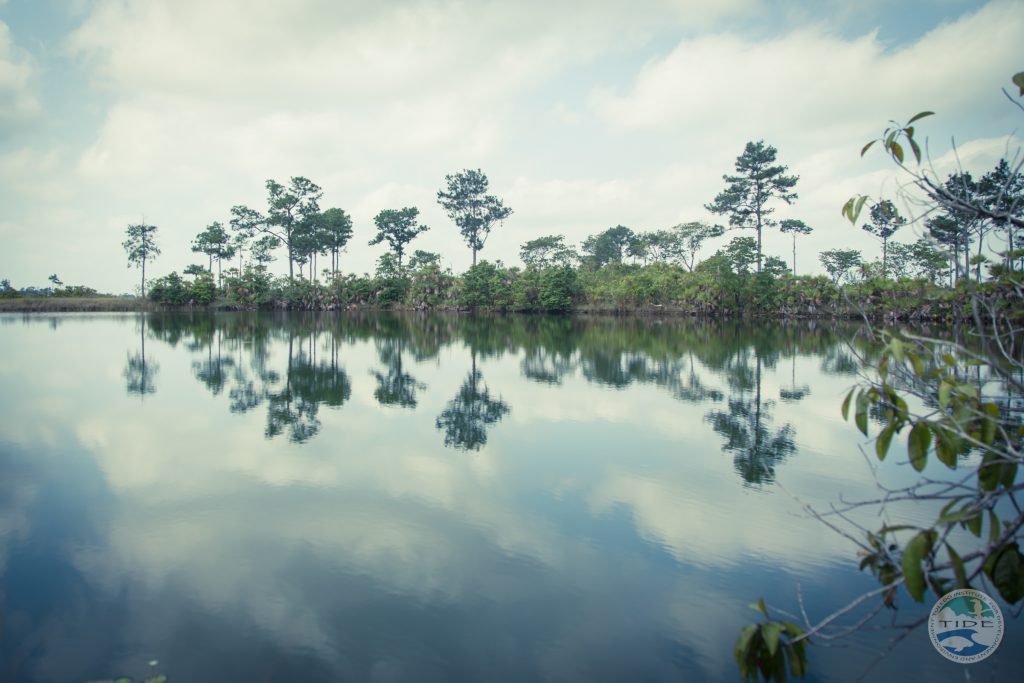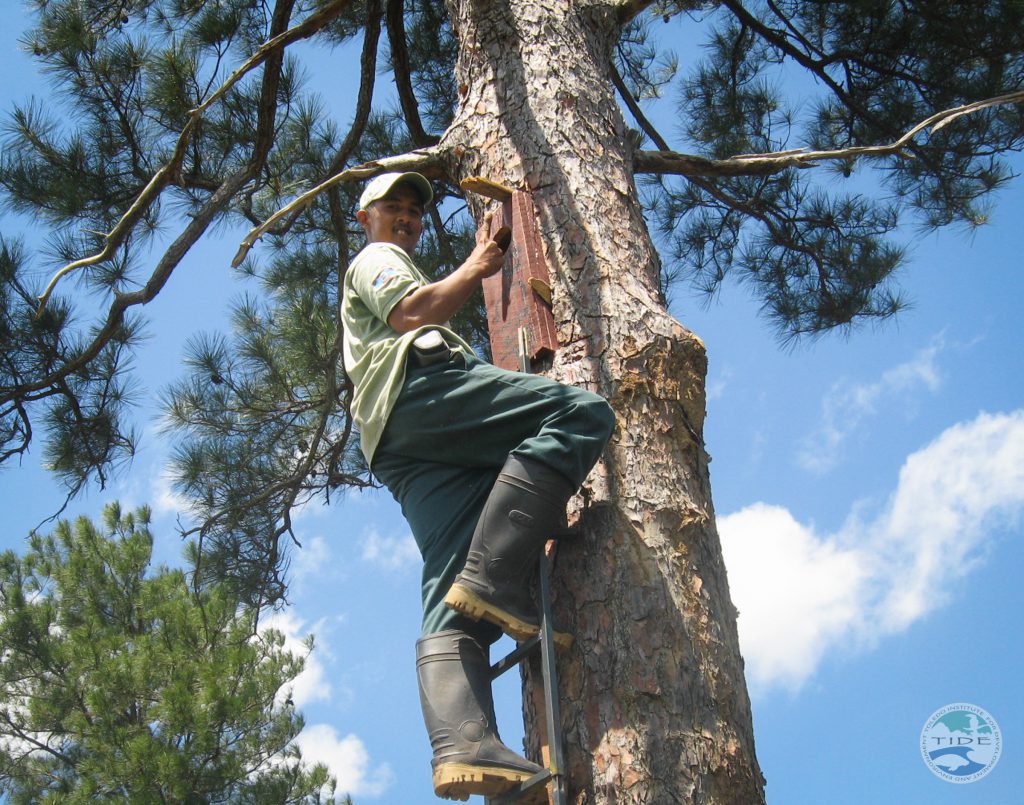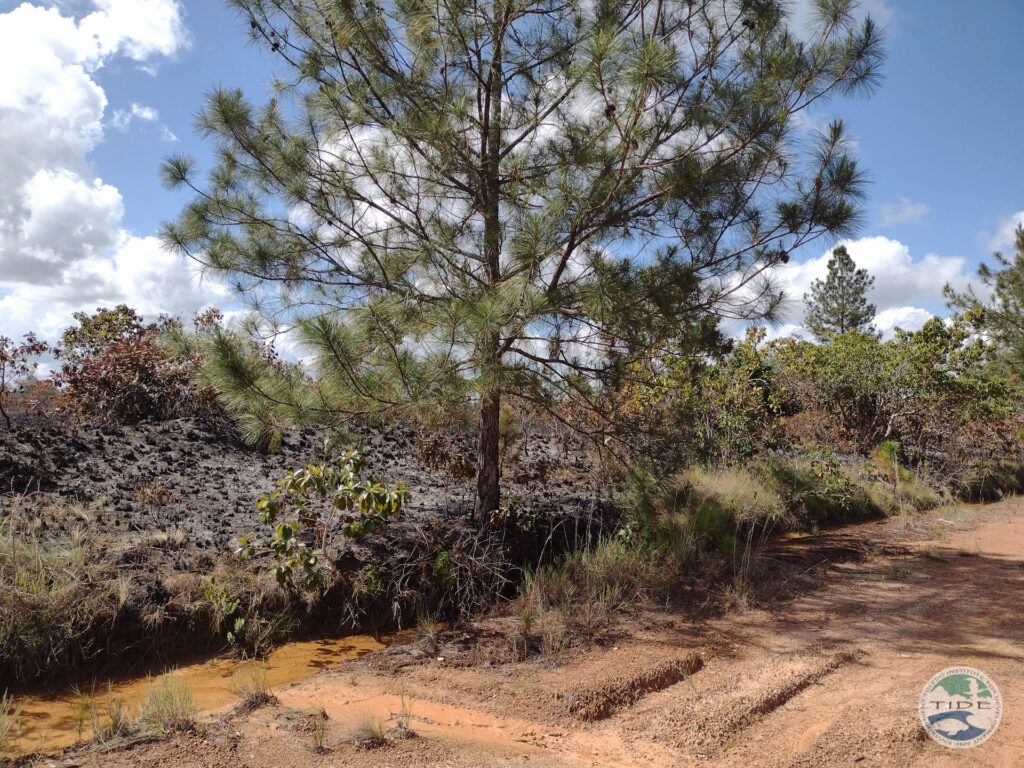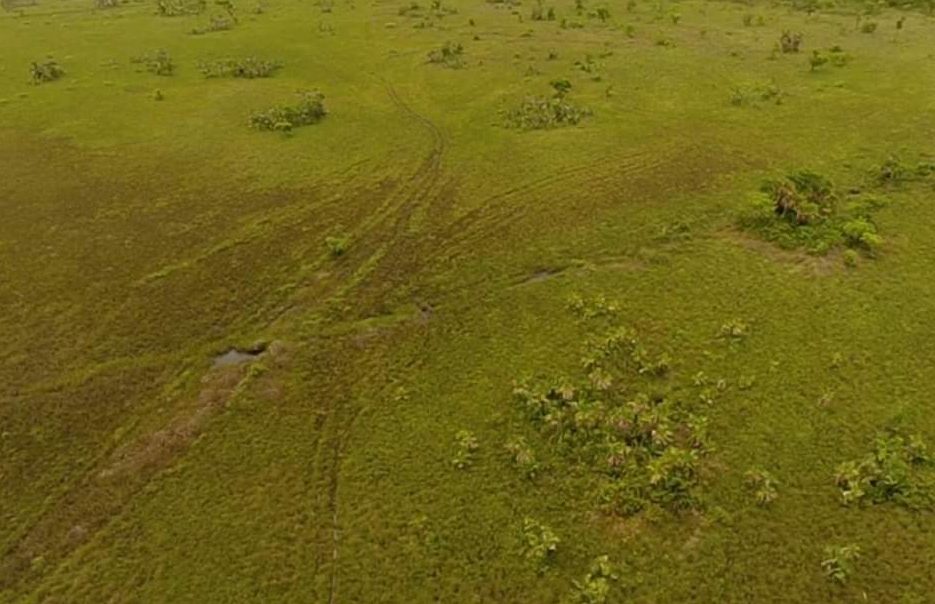Payne's Creek National Park
Payne’s Creek National Park (PCNP) covers 37,680 acres in the Toledo District. It is co-managed by TIDE and the Belize Forest Department.
PCNP protects hypersaline, saline, brackish and freshwater habitats, mangroves, broadleaf forest and savannah and provides direct protection for a diversity of species, of which twenty are endangered or vulnerable. These include the West Indian manatee (Trichechus manatus), goliath grouper (Epinephelus itajara), black howler monkey (Alouatta pigra) and yellow-headed parrot (Amazona oratrix) as well as Belize’s five species of cat.

The main purpose of PCNP is the preservation of biodiversity and the sustainable use of the resources through non-extractive activity. This is achieved through a set of programs and activities that ensure the continuation of the health of natural resources in the park. Activities includes regular enforcement patrols by staff in order to prevent illegal activities in the park. Tourism is also important to the park including regular use of the Punta Y’cacos Lagoon for fly-fishing.
Management of PCNP by TIDE actively includes the buffer communities of Monkey River, Punta Negra, and Punta Gorda and is a national model of participatory administration.
Fire Management
Wild fires are one of the major threats faced by PCNP. TIDE’s fire team uses prescribed burns in strategic places in order to control the location and size of fires. This allows the pine savannah to regenerate. We are on target to restore natural uneven-aged stands of Caribbean pine by 2020. Fire management also enhances the nesting environment for endangered yellow-headed parrot.
Yellow-Headed Parrot Monitoring

From 2012, the Payne’s Creek rangers began to install artificial nest boxes to encourage yellow-headed parrot population growth. In the first year, three of the ten boxes contained nests with six eggs being laid in total. Of those eggs, three chicks successfully fledged. In 2013, nine of the 19 nest boxes present have been occupied and 15 eggs laid.
Law Enforcement
Our rangers are well equiped and trained in Protected Areas Law Enforcement and Special Constable Training. The team averages over 300 patrols annually in and around the park on foot, bicycle, vehicle and atv. Major infractions observed during patrols include: illegal hunting, illegal poaching, illegal camping and illegal entry.


